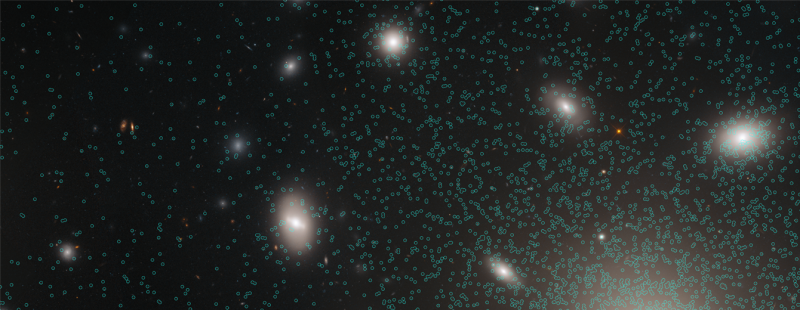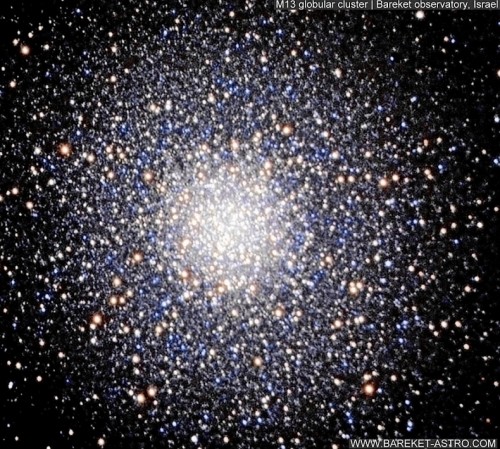
Our Milky Way galaxy’s globular star clusters are its oldest inhabitants. These clusters lie not in the flat plane of our galaxy, but instead are gravitationally bound to our galaxy in a great sphere centered on the galaxy’s center. These clusters are thought to have been left behind when a cloud of primordial gas and dust flattened out to make our spiral Milky Way. Today, amateur astronomers love to peer toward globular clusters because they’re beautiful and symmetrical, like big cosmic dandelions gone to seed (except the “seeds” are stars). We tend to think of globular clusters as bound to our Milky Way galaxy or other galaxies. So it’s surprising to hear of globular clusters scattered between galaxies in the Coma galaxy cluster, some 300 million light-years away.
A survey with the Hubble Space Telescope revealed the globular clusters in the Coma galaxy cluster. This cluster holds over 1,000 galaxies. In a paper published November 9, 2018, in the peer-reviewed Astrophysical Journal, astronomers reported on finding the clusters and said they can now use this globular cluster field to map the distribution of matter and dark matter in the Coma galaxy cluster.
Let’s go back for a minute, to our Milky Way’s globular clusters. About 150 globular clusters orbit our Milky Way. NASA recently compared them to:
… bees buzzing around a hive. They are the earliest homesteaders of our galaxy, containing the universe’s oldest known stars.
We knew other galaxies have their own systems of globular clusters, too. Every galaxy of sufficient mass in our Local Group of galaxies has its associated group of globular clusters. Almost every large galaxy surveyed has been found to possess a system of globular clusters.
But finding them “scattered” is something different.

Peering into the heart of the giant Coma cluster of galaxies, astronomers using the Hubble Space Telescope captured a whopping 22,426 globular star clusters. The survey found the globular clusters scattered in space among the 1,000 galaxies inside the Coma cluster. NASA said these globular clusters have been:
… orphaned from their home galaxy due to galaxy near-collisions inside the traffic-jammed galaxy cluster. Because they are so numerous in the Coma cluster, they are excellent tracers of the entire gravitational field that keeps the galaxies from flinging off into space.
The gravity is a tracer of the distribution of dark matter.
Surprised? It’s not often you hear the words globular cluster and dark matter in the same sentence. Dark matter, astronomers believe, is a form of matter that we cannot see. It appears to make up a substantial portion of the mass of our universe. In a statement at HubbleSite, these astronomers explained:
Because globular clusters are much smaller than entire galaxies — and much more abundant — they are a much better tracer of how the fabric of space is distorted by the Coma cluster’s gravity. In fact, the Coma cluster is one of the first places where observed gravitational anomalies were considered to be indicative of a lot of unseen mass in the universe – later to be called ‘dark matter.’
The astronomers’ statement said that – in the new study – Hubble revealed that some globular clusters line up along bridge-like patterns:
This is telltale evidence for interactions between galaxies where they gravitationally tug on each other like pulling taffy.
Such gravitational tugging is possibly indicative of dark matter at work. The astronomers say they will continue these studies, in order to learn more.
Read more about this study, via HubbleSite
Bottom line: Peering into the heart of the giant Coma cluster of galaxies, the Hubble Space Telescope captured a whopping 22,426 globular star clusters scattered among the Coma cluster’s 1,000 galaxies.
Source: A Wide-Field Map of Intracluster Globular Clusters in Coma
The 2019 lunar calendars are here! Order yours before they’re gone. Makes a great gift.











